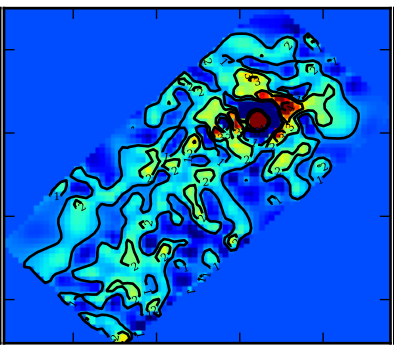Abstract
In this paper, we compare three methods to reconstruct galaxy cluster density fields with weak lensing data. The first method called FLens integrates an inpainting concept to invert the shear field with possible gaps, and a multi-scale entropy denoising procedure to remove the noise contained in the final reconstruction, that arises mostly from the random intrinsic shape of the galaxies. The second and third methods are based on a model of the density field made of a multi-scale grid of radial basis functions. In one case, the model parameters are computed with a linear inversion involving a singular value decomposition. In the other case, the model parameters are estimated using a Bayesian MCMC optimization implemented in the lensing software Lenstool. Methods are compared on simulated data with varying galaxy density fields. We pay particular attention to the errors estimated with resampling. We find the multi-scale grid model optimized with MCMC to provide the best results, but at high computational cost, especially when considering resampling. The SVD method is much faster but yields noisy maps, although this can be mitigated with resampling. The FLens method is a good compromise with fast computation, high signal to noise reconstruction, but lower resolution maps. All three methods are applied to the MACS J0717+3745 galaxy cluster field, and reveal the filamentary structure discovered in Jauzac et al. 2012. We conclude that sensitive priors can help to get high signal to noise, and unbiased reconstructions.

